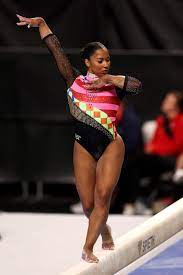Choosing the right gymnastics for kids program can make all the difference in your child’s physical development, confidence, and enjoyment of movement. The best programs balance safety, skill progression, and fun, while also aligning with your child’s personality and energy levels. In this guide, we’ll show you exactly what to look for, questions to ask, and red flags to avoid—so you can confidently enrol your child in a program they’ll thrive in.
What should I look for in a kids’ gymnastics program?
A quality gymnastics program should support both beginner fundamentals and long-term skill building. Here’s what to check before enrolling:
- Qualified Coaches: Ensure instructors have relevant certifications (e.g., Gymnastics Australia or equivalent) and experience working with children.
- Safe Facilities: The gym should have padded flooring, age-appropriate equipment, and clear safety protocols.
- Age-Based Levels: Look for classes grouped by age and ability to help your child stay challenged without being overwhelmed.
- Structured Curriculum: A good program outlines weekly goals and tracks progress using skill checklists or milestone systems.
- Trial Classes: Many reputable clubs offer free or low-cost trial sessions, giving your child a chance to try it before committing.
How old should my child be to start gymnastics?
Most clubs offer gymnastics for kids from as early as 18 months, with classes segmented into:
- Toddler Gym (1.5 – 3 years): Focuses on motor skills, balance, and bonding with a parent or carer.
- Preschool Gym (3 – 5 years): Encourages coordination and listening skills in a fun, imaginative environment.
- Recreational Gymnastics (5 – 12 years): Builds technique in key disciplines like floor, beam, bars, and vault.
Research suggests starting young boosts neural development, coordination, and confidence (Australian Institute of Sport).
Should I choose recreational or competitive gymnastics?
This depends on your child’s interests and goals:
- Recreational Programs: Ideal for fun, fitness, and social skills. Low pressure and inclusive of all abilities.
- Competitive Pathways: Structured for skill progression, commitment, and competitions. Requires more time, discipline, and family involvement.
Start recreationally, and let your child show interest in advancing. Pushing too early can lead to burnout or anxiety.
What questions should I ask a gymnastics centre?
During your visit or trial, ask these practical questions:
- What’s the coach-to-child ratio?
Aim for no more than 1:8 in younger age groups. - How do you handle injuries or emergencies?
Ensure staff are First Aid trained and have child safety protocols. - What’s your class structure like?
Look for warm-up, skill rotations, cool-down, and a positive end-of-class routine. - Do you offer makeup classes or flexible terms?
Life happens—flexibility can be a lifesaver for busy families.
These questions establish trust and show that you’re choosing based on fit, not just convenience—a principle known as Consistency, which often leads to stronger long-term commitments from both parent and child.
How can I tell if my child enjoys gymnastics?
Look for signs like:
- Asking to attend more often
- Talking about their coach or new skills at home
- Practising moves around the house
- Gaining confidence in other physical activities
If they’re dragging their feet to class or expressing anxiety, it may be worth discussing with the coach or exploring a different program style.
What are some red flags in kids’ gymnastics programs?
Avoid programs that:
- Have no visible safety certifications or first aid kits
- Use punishment (like push-ups) for mistakes
- Don’t allow parents to view sessions or provide feedback
- Rush kids into competitive levels without consultation
Trust your instincts—if something feels off, it probably is.
How important is the coach–child connection?
Very. A coach who communicates clearly, encourages effort over perfection, and fosters a safe, inclusive space can dramatically boost your child’s enjoyment and confidence.
Parents often underestimate the power of Liking—a persuasion principle that says we trust and respond better to people we feel connected to. If your child feels seen and valued by their coach, they’re more likely to stay engaged and stick with the sport.
What if my child has special needs?
Look for inclusive programs or clubs with experience in adaptive gymnastics. Many centres now offer modified sessions or one-on-one coaching for kids with developmental or physical challenges. Always discuss your child’s needs upfront to ensure they’ll be supported.
FAQs
Is gymnastics safe for young kids?
Yes—when supervised properly and done in a well-equipped environment. Reputable clubs prioritise safety and use soft equipment to reduce injury risk.
How often should my child attend classes?
Once a week is fine for beginners. As skills progress, your child may want to increase to two or more sessions per week.
Do I need to buy special equipment?
Most gyms provide the equipment. Your child just needs comfortable clothes (not too loose), and long hair should be tied back.
Final thoughts: How to make the best choice
Choosing a gymnastics for kids program isn’t about finding the flashiest facility or most medals. It’s about matching your child’s personality, needs, and energy with a space where they’ll grow in confidence and coordination.
And if you’re considering ongoing development across a range of activities—not just gymnastics—many families explore fitness and wellbeing programs offered by the same providers, giving kids broader exposure to physical literacy and social growth.
For a deeper dive into early childhood physical activity guidelines, check out the Raising Children Network for up-to-date advice from Australian health experts.

